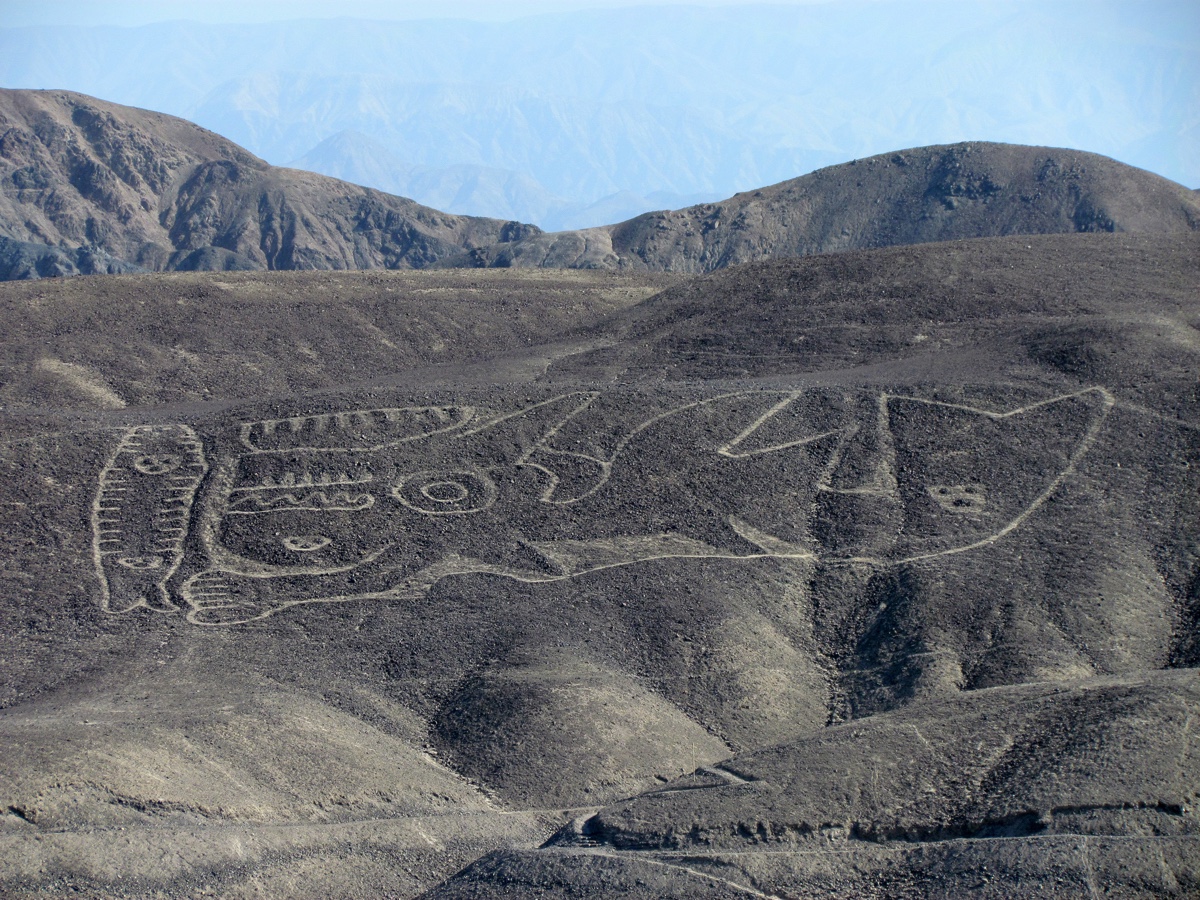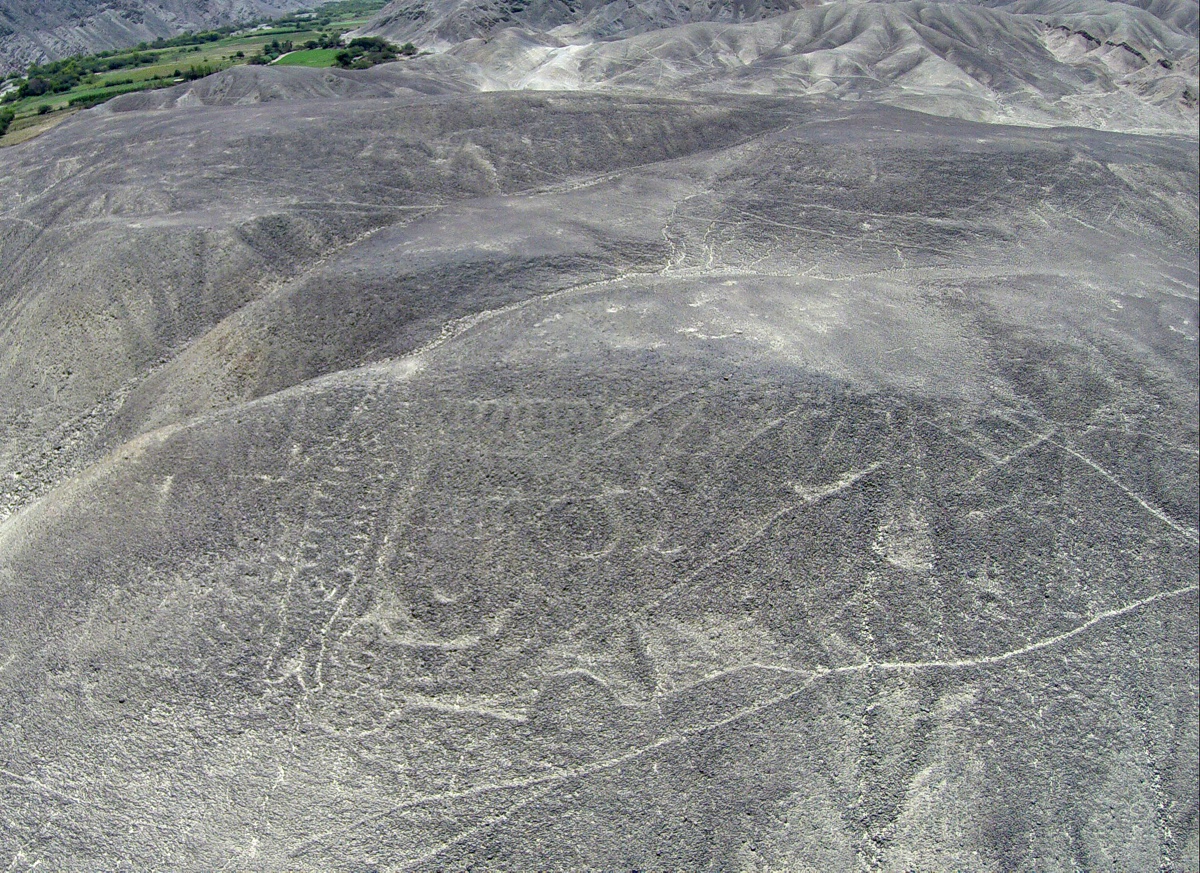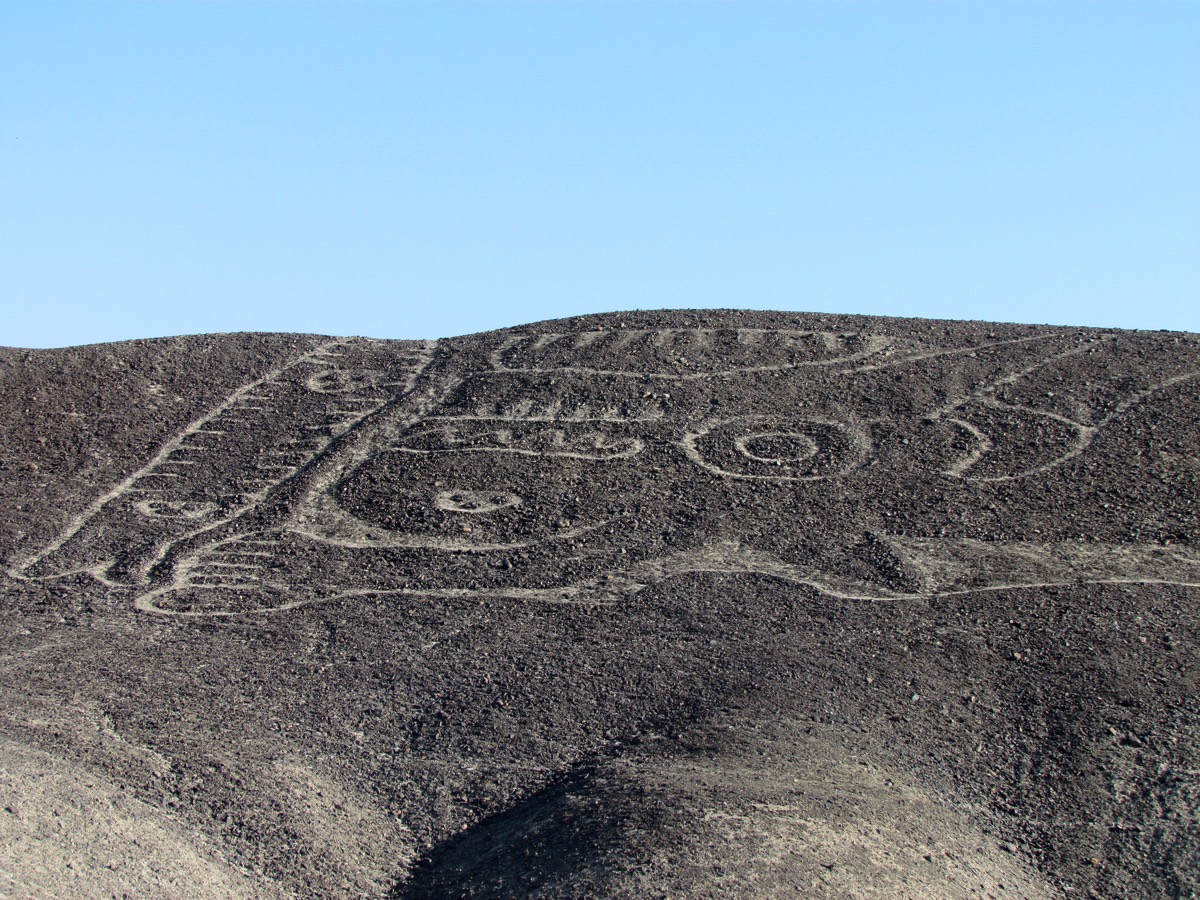2,000-Year-Old Killer Whale Geoglyph Found in Peru Desert

Archaeologists rediscovered a giant geoglyph of a killer whale, etched into a desert hillside in the remote Palpa region of southern Peru, after it had been lost to science for more than 50 years.
The 230-foot-long (70 meters) figure of an orca — considered a powerful, semimythical creature in ancient Peruvian lore — may be more than 2,000 years old, according to the researchers.
They said it may be one the oldest geoglyphs in the Palpa region, and older than those in the nearby Nazca region, which is famous for its vast collection of ancient ground markings — the Nazca Lines — that include animal figures, straight lines and geometrical shapes. [See Photos of the Orca Geoglyph of Peruvian Lore]
Archaeologist Johny Isla, the head of Peru's Ministry of Culture in Ica province, which includes the Palpa and Nazca valleys, explained that he saw a single photograph of the orca pattern for the first time about four years ago. He'd seen it while researching studies of geoglyphs at the German Archaeological Institute in Bonn.
The photograph appeared in an archaeological catalog of geoglyphs printed in the 1970s, which was based on research carried out in Palpa and Nazca by German archaeologists in the 1960s, Isla said.
But the location and size of the orca geoglyph were not well-described in the catalog, Isla told Live Science in an email.
As a result, he said, the glyph's whereabouts in the desert hills of the Palpa Valley, about 250 miles (400 kilometers) south of Lima, were by then unknown to local people or to scientists.
Sign up for the Live Science daily newsletter now
Get the world’s most fascinating discoveries delivered straight to your inbox.
After returning to Peru, Isla looked for the orca geoglyph on Google Earth and then on foot. "It was not easy to find it, because the [location and description] data were not correct, and I almost lost hope," he said. "However, I expanded the search area and finally found it a few months later," in January 2015.
Orca art
After documenting the rediscovery, Isla led a team of six specialists from Peru's Ministry of Culture in an effort to clean and restore the orca geoglyph in March and April this year.
Before the restoration, the geoglyph was disappearing due to erosion and the passage of time. "Being drawn on a slope, it is easier [for it] to suffer damage than [for] those figures that are in flat areas, such as those of the Nazca Pampa," he said.

The creators of the orca drew it on the hillside in negative relief by removing a thin layer of stones to form the outline of the figure. This is similar to the technique used by the people of the Nazca culture to create geoglyphs from about 100 B.C. to A.D. 800.
But some contrasting parts of the rediscovered pattern, such as the eyes, were created out of piles of stones, the researchers said. This technique was used by people of the older Paracas culture, who occupied the region from around 800 B.C. to 200 B.C.
Soil tests have indicated that the orca geoglyph dates from around 200 B.C. The style of the pattern and its location on a hillside, rather than on a plain, suggest that it may be one of the oldest geoglyphs in the region, said one of Isla's colleagues, Markus Reindel of the German Archaeological Institute, in an interview in a German newspaper.
Isla said that before the restoration earlier this year, it would have been hard for a layperson to see the orca. "With the eyes of an archaeologist, and after having seen the photo in the catalog and later in Google Earth, it was not very difficult," he said. "However, [for] the eyes of a person without these advantages, it was a bit difficult." [In Photos: Google Earth Reveals Sprawling Geoglyphs in Kazakhstan]
Paracas people
The Paracas culture had developed in the valleys of Chincha, Pisco and Ica, north of Palpa, after 800 B.C. and later occupied the valleys of Nazca and Palpa, Isla explained. Paracas society, he said, was theocratic (ruled by priests) and agricultural, and had made important advances in the production of ceramics and textiles.

"The landscape of the region where the Nazca and Palpa geoglyphs are located basically corresponds to the coastal desert, north of the Atacama Desert, which is cut by small oasis valleys," Isla said. "People lived on the edge of the valleys and used the slopes and plateaus of the desert to make the geoglyphs."
The geoglyphs of Palpa and Nazca cover an area of more than 174 square miles (450 square km). Their exact purpose remains a mystery, but archaeologists think the images were primarily religious symbols.
Isla and Reindel have explored the Palpa region since the 1990s, finding more than 1,000 geoglyphs, some of which are more than 1,300 feet (400 m) long, according to an article published in 2005 in the journal Andean Past.
Peru's Ministry of Culture is trying to secure access to the orca geoglyph and provide basic services for visitors to the area, Isla said. However, public access to the geoglyph was currently restricted by the claims of "land traffickers," who were able to lay claim to uncultivated land under Peruvian law, he said
"Both in Nazca and in Palpa, the archaeological heritage, especially the geoglyphs, has been threatened by urban advance and the expansion of the agricultural frontier," Isla said. "This [has happened] with the lands near the orca geoglyph, where there is currently private property that occupies part of the archaeological zone."
Original article on Live Science.
Tom Metcalfe is a freelance journalist and regular Live Science contributor who is based in London in the United Kingdom. Tom writes mainly about science, space, archaeology, the Earth and the oceans. He has also written for the BBC, NBC News, National Geographic, Scientific American, Air & Space, and many others.










